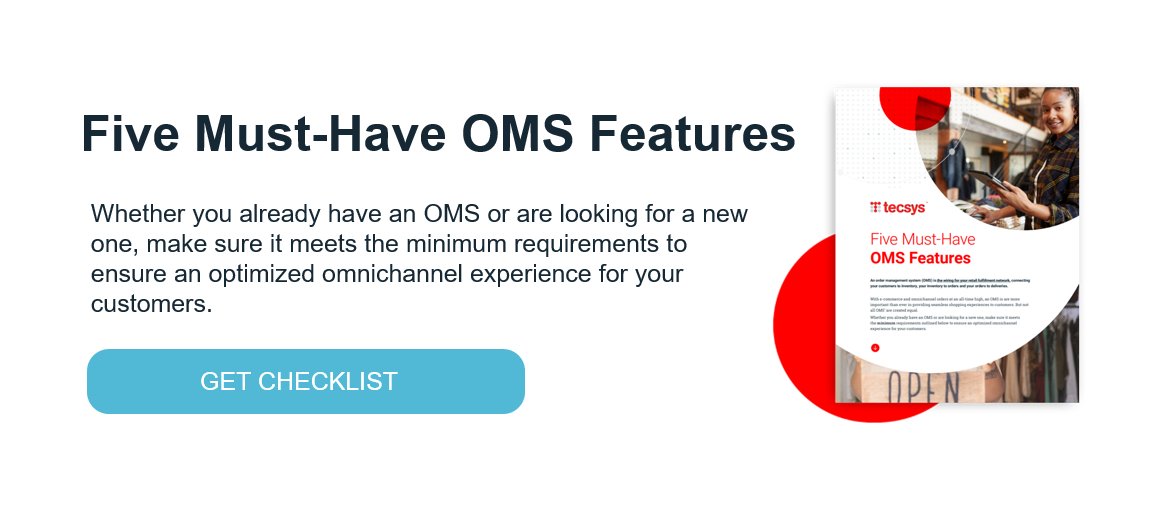7 Reasons NOT to Build a Retail OMS

Editor’s Note: This post was originally published in November 2016 and has been updated for freshness, accuracy and comprehensiveness.
A question some retailers may be asking themselves as they continue to develop their omnichannel capabilities is, “If my company has a strong IT team, why not just build a retail order management system (OMS) of our own?”
There are different reasons why a company would want to do this, such as, “We just build all of our software.” If you are leaning toward the “build vs. buy” direction, my suggestion is to lean in the other way. There’s no reason why any retailer should be considering building their own OMS, especially now when the solution has gone through enough years of development that it’s optimized for pretty much any retail fulfillment scenario.
However, if you’re still on the fence, here are seven more reasons why you shouldn’t build (or worse, have someone else build for you) an order management system:
1. High Startup Costs
Even if you have your own competent software development team, are you sure they are the right people to do the job? Do they have the depth to create effective order routing algorithms that won’t end up costing you money with every shipment? Chances are that you will have to hire a few consultants, analysts, project managers, coders and others, just to get the project started. Indeed, excellent experienced IT resources are both expensive and can be a challenge to find … especially in today’s tight labor market.
2. Long Software Build Cycle
Don’t underestimate how long it takes to develop, architect and build a retail OMS. As a mission-critical application, you don’t want to rush in and cut corners. By the way, an OMS can be implemented in as little as 90 days and on average in about five months. Can you build one that fast? If you want to be ready to go with your omnichannel initiatives even quicker, focus resources on implementation and integration.
3. Quality Assurance
After you have assembled your team and figured out where to start, what to do and how to do it, you also better make sure the OMS you built works correctly. A typical retailer can easily process thousands of orders per minute during peak Black Friday hours. Imagine running a promotion with a system that breaks at peak order volumes because it can’t scale with demand. The hypercompetitive nature of omnichannel retail means that customers have multiple retail options to choose from. You can’t afford system outages in your mission-critical application.
4. Upgrades
One of the advantages of a SaaS-based OMS is that it is on a continual upgrade cycle. You don’t have to pay a big upgrade fee and replace all your IT infrastructure with the latest and greatest hardware. You also don’t have to keep a large staff of IT developers on hand to continually work on the system enhancements that your business wants. When you buy an OMS, if your vendor is not giving you the services, features and functions that your business needs then you can simply replace the system with a new provider.
5. Continuity Planning
I often hear stories about companies being at the mercy of one or a handful of individuals who are the only ones that can maintain and support a legacy system. What would happen if/when they leave the organization? If you build a retail OMS, can you be sure you will be able to keep the right expertise to maintain and upgrade the system, year after year?
6. Lack of Support
Don’t forget that after completing the development project you will have to train your staff and field associates. You should also have specialists ready to answer questions as they arise. And don’t forget about bugs at go-live. The software project does not end when coding is complete.
7. Hardware and Hosting Overhead
Even if you choose to run your new system on a hosted platform, you will still have to plan for overhead, maintenance, staffing and costs. It is easy to forget about the extra resources and computational power needed to run your new retail order management system — it will cost you money, time and effort. The economies of scale for hosting enjoyed by an OMS vendor will shine through when it comes to budget season.
Heed the Warnings
A retail OMS is your company’s mission-critical application that will enable you to succeed in an omnichannel retail world. Buying an order management system is the easier, more cost-effective and lower risk choice. It will also get you to market faster.
However, if you’re still not convinced, here’s an analogy from an industry analyst that really drives the point home: “The crucial thing is if you haven’t bought an OMS before, how do you know what the finished product actually needs to look like? You could end up with a five-wheel car that works perfectly well, but cars only have four.” Can’t argue with that.




